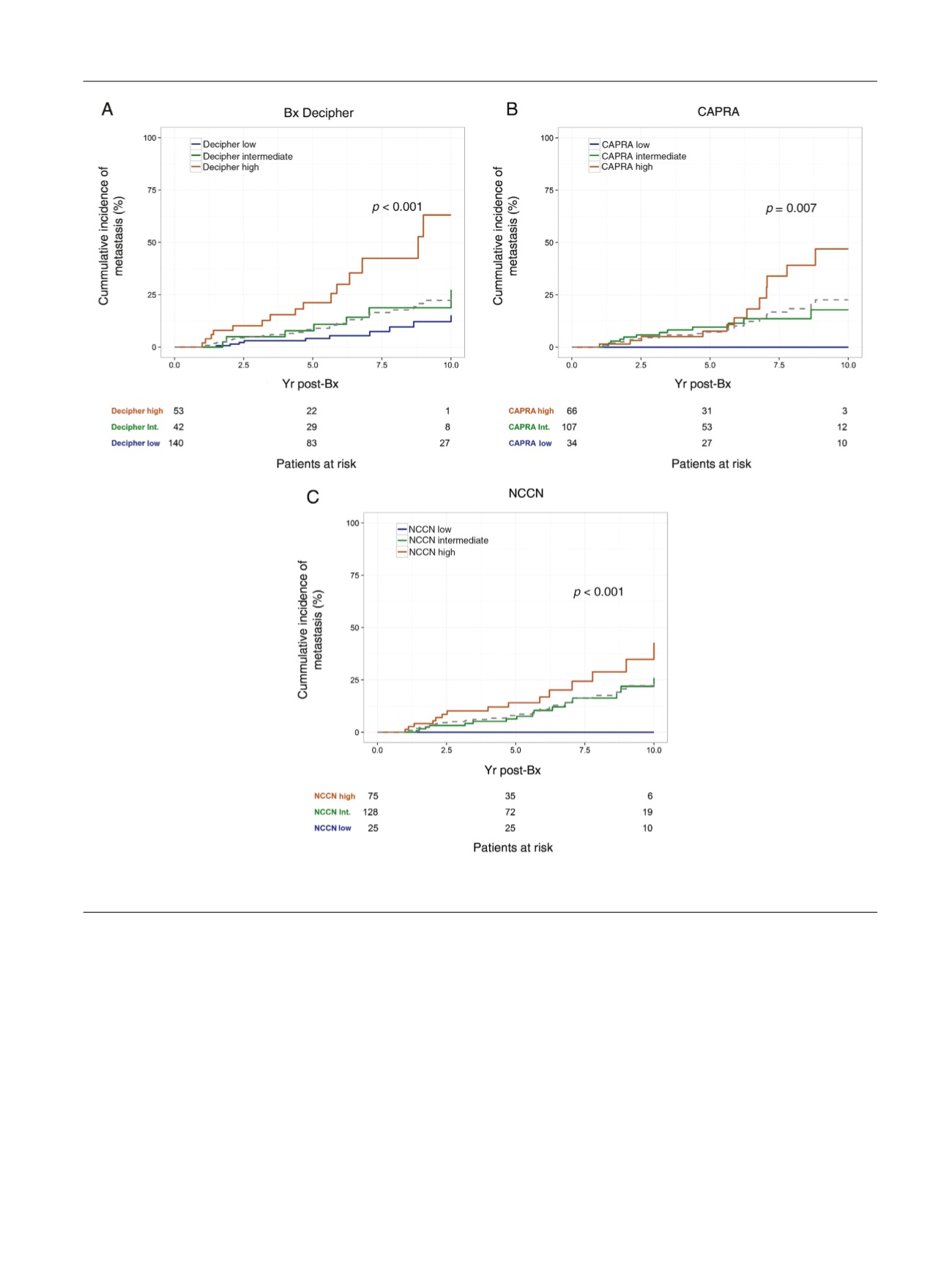

patients with NCCN intermediate- and high-risk disease
(
n
= 203) to determine whether Decipher would retain its
prognostic value in this more homogeneous population.
Among these patients, biopsy Decipher retained significant
prognostic value for distant metastasis after adjusting for
CAPRA score (adjusted HR of 1.41, 95% CI: 1.12–1.80)
(Supplementary Table 3). The cumulative incidence of
distant metastasis at 5 yr for this subset was 5.2%, 8.7%, and
19%, for biopsy Decipher low, intermediate, and high,
respectively (Supplementary Fig. 3;
p
0.001).
3.4.
Evaluation of Decipher for prediction of PCSM
Finally, we used univariable analysis to evaluate the
performance of NCCN, CAPRA, and biopsy Decipher for
prediction of PCSM due to a low number events (
n
= 11). In
this analysis, only biopsy Decipher significantly stratified
PCSM risk (log-rank
p
= 0.008;
Fig. 3, Supplementary
Table 4). Patients with low-, intermediate- and high-risk
Decipher had a 0%, 0%, and 9.4% incidence of PCSM by 5-yr
post-treatment
( Fig. 3). The HR for PCSM was 1.57 (95% CI:
[(Fig._2)TD$FIG]
Fig. 2 – Cumulative incidence curves for Decipher, Cancer of the Prostate Risk Assessment (CAPRA), and National Comprehensive Cancer Network
(NCCN) for metastasis endpoint. The dashed gray line represents the cohort average for metastasis risk.
E U R O P E A N U R O L O G Y 7 2 ( 2 0 1 7 ) 8 4 5 – 8 5 2
849
















